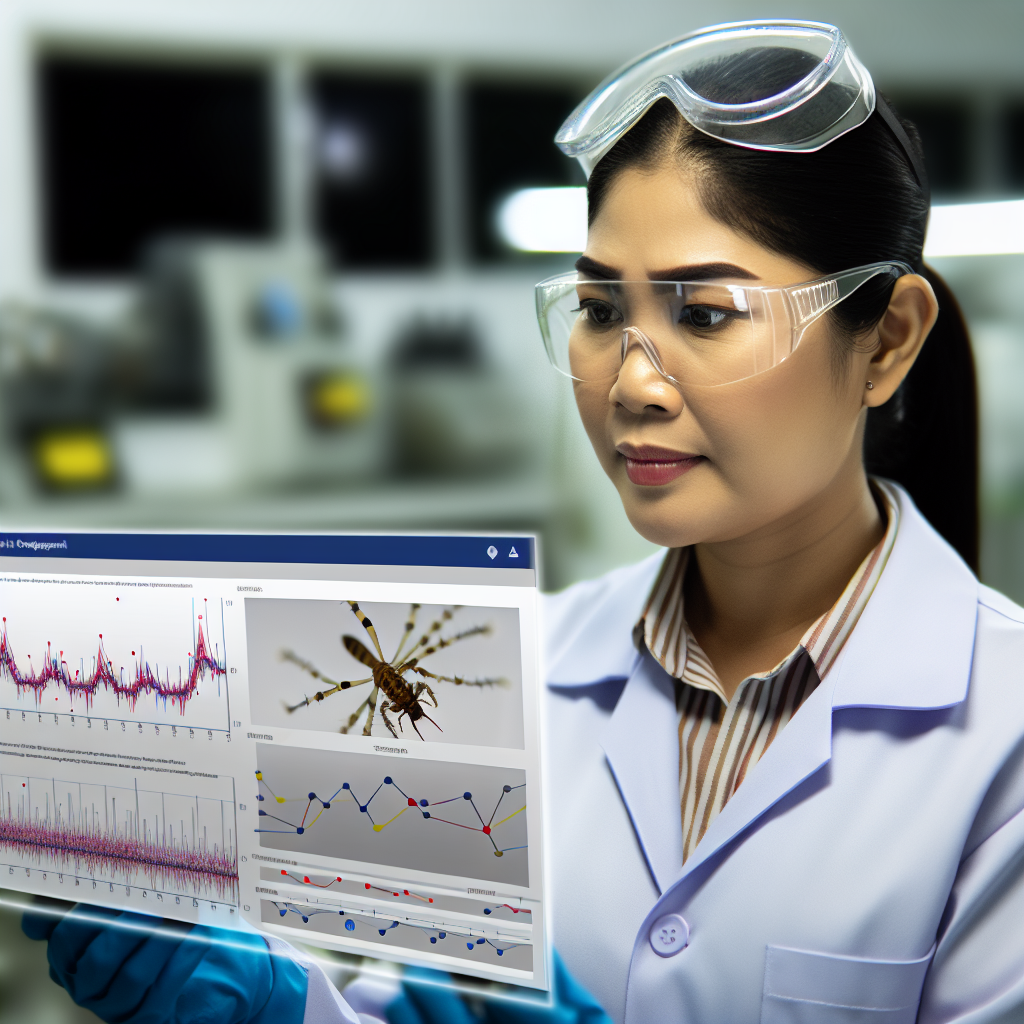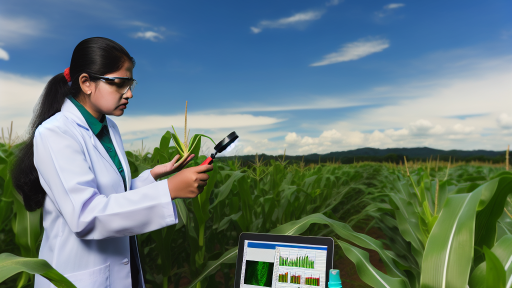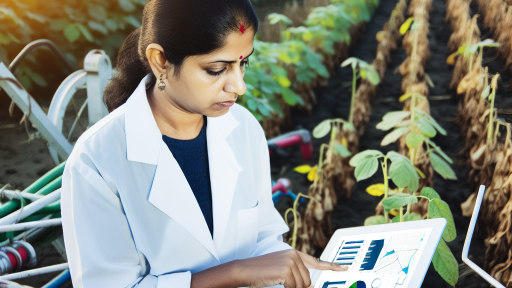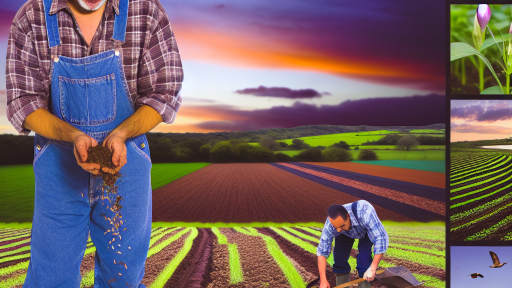Introduction to Integrated Pest Management and its Importance
Integrated Pest Management, or IPM, combines several pest control strategies.
This approach aims to minimize environmental impact while enhancing pest control efficacy.
Farmers and agricultural professionals widely recognize the significance of IPM.
It addresses the growing concerns of pesticide resistance and environmental degradation.
What is Integrated Pest Management?
IPM is a holistic approach to pest control based on ecological principles.
It leverages knowledge about pest life cycles and environmental conditions.
IPM prioritizes sustainable practices that support long-term agricultural health.
Key Components of IPM
- Monitoring pest populations and assessing their impact.
- Identifying biological and cultural control methods.
- Utilizing chemical controls only when necessary.
These components promote pest management that is safe and effective.
Benefits of Integrated Pest Management
IPM serves to reduce reliance on chemical pesticides.
This leads to healthier ecosystems and improved biodiversity.
Furthermore, it enhances crop yields by managing pest populations effectively.
IPM also helps protect beneficial organisms that contribute to pest control.
The Role of Forecasting Techniques in IPM
Forecasting techniques play a critical role in effective IPM practices.
These techniques use data to predict pest outbreaks before they occur.
Early detection allows for timely interventions that mitigate damage.
Transform Your Agribusiness
Unlock your farm's potential with expert advice tailored to your needs. Get actionable steps that drive real results.
Get StartedBy incorporating forecasting, farmers can optimize their pest management efforts.
Overview of Pest Forecasting Techniques in IPM
Introduction to Integrated Pest Management
Integrated Pest Management (IPM) is a holistic approach to pest control.
This method emphasizes the use of various forecasting techniques.
Moreover, these techniques improve pest monitoring and management.
Key Pest Forecasting Techniques
Several forecasting techniques exist to aid in pest management.
Each technique offers unique benefits and applications.
- Sampling and Monitoring
- Predictive Modeling
- Weather-Based Forecasting
- Geospatial Analysis
Sampling and Monitoring
Sampling involves collecting data on pest populations.
This data helps identify trends and patterns.
Using traps is a common method in sampling.
Monitoring allows for timely interventions in pest management.
Predictive Modeling
Predictive modeling uses statistical methods to forecast pest behavior.
This technique synthesizes data from various sources.
Furthermore, it allows for the assessment of potential pest outbreaks.
Models help farmers make informed management decisions.
Weather-Based Forecasting
Weather plays a significant role in pest development.
Weather-based forecasting links pest activity to climatic conditions.
By analyzing temperature and humidity, managers can predict pests’ life cycles.
This knowledge aids in planning agriculture strategies accordingly.
Geospatial Analysis
Geospatial analysis leverages geographic information systems (GIS).
This method examines spatial data related to pest incidence.
It helps visualize infestation patterns across landscapes.
As a result, it allows for targeted pest management interventions.
Benefits of Pest Forecasting Techniques
Pest forecasting offers numerous benefits for agriculture.
It reduces reliance on chemical pesticides.
Showcase Your Farming Business
Publish your professional farming services profile on our blog for a one-time fee of $200 and reach a dedicated audience of farmers and agribusiness owners.
Publish Your ProfileThis approach promotes more sustainable farming practices.
Additionally, it helps optimize resource use and improve yields.
Farmers can adapt their strategies based on accurate predictions.
Challenges in Pest Forecasting
Despite its advantages, pest forecasting faces challenges.
Data availability can limit the effectiveness of certain techniques.
Moreover, climatic variability poses complications in predictions.
Farmers need ongoing training to utilize these techniques effectively.
Future Directions in Pest Forecasting
The future of pest forecasting looks promising.
Advances in technology will enhance predictive accuracy.
Furthermore, integrating machine learning may improve modeling techniques.
Developing robust data-sharing networks will benefit farmers.
Ultimately, these advancements will lead to more effective IPM strategies.
Data Collection Methods for Pest Forecasting
Importance of Data Collection
Data collection plays a crucial role in pest forecasting.
It helps in understanding pest populations and their behaviors.
Moreover, timely data ensures effective management strategies.
Types of Data Used in Pest Forecasting
Several types of data are necessary for effective forecasting.
Biological data provides information on pest life cycles.
Weather data impacts pest activity and survival rates.
Additionally, land use data reveals potential habitats for pests.
Methods of Data Collection
Diverse methods enhance the accuracy of pest forecasts.
Field Observations
Field observations involve direct monitoring of pest populations.
Professionals visit sites regularly to gather firsthand data.
This method allows for the identification of pest species and counts.
Remote Sensing
Remote sensing utilizes technology to collect data over large areas.
Sensors can detect changes in vegetation that attract pests.
Moreover, satellite imagery helps in analyzing land use changes.
Traps and Sampling
Using traps is another effective data collection technique.
Traps capture pests, providing quantitative data on their populations.
Scientists can analyze trapped specimens to identify species.
Surveys and Questionnaires
Surveys gather data from farmers and landowners about pest sightings.
Questionnaires are valuable for collecting regional pest information.
These methods rely on local knowledge and experiences.
Data Analysis Techniques
Data analysis techniques enhance predictive capabilities.
Statistical models analyze trends in the collected data.
Machine learning algorithms identify patterns for future forecasting.
Integrating Data Sources
Integrating diverse data sources improves forecast accuracy.
Collaboration among researchers, farmers, and extension services is vital.
This cooperation enables a comprehensive approach to pest management.
See Related Content: Leveraging Big Data For Crop Management Success
Role of Weather Data in Pest Forecasting Models
Importance of Accurate Weather Data
Accurate weather data significantly enhances pest forecasting models.
Showcase Your Farming Business
Publish your professional farming services profile on our blog for a one-time fee of $200 and reach a dedicated audience of farmers and agribusiness owners.
Publish Your ProfileIt allows researchers to predict pest behavior effectively.
Moreover, understanding local climate conditions is crucial for precision.
Types of Weather Data Utilized
Pest forecasting relies on various types of weather data.
Temperature data gives insights into pest lifecycle stages.
Humidity levels also influence pest population dynamics.
Precipitation patterns are essential for identifying infestations.
Data Sources and Technologies
Multiple sources provide data for pest forecasting models.
Weather stations offer localized and real-time information.
Satellite imagery enhances understanding of large-scale weather patterns.
Additionally, remote sensing technology captures crucial environmental changes.
Integration into Pest Management Strategies
Weather data integrates seamlessly into integrated pest management strategies.
It supports decision-making for timely pesticide application.
Furthermore, it helps farmers implement crop rotation practices effectively.
Case Studies in Effective Forecasting
Numerous case studies illustrate the success of weather-based forecasting.
For example, researchers in California leveraged real-time weather data.
This approach led to a reduction in pesticide usage by 30%.
Similarly, studies conducted in Florida improved cotton yield by 15%.
Find Out More: Future Trends In Crop Monitoring And Analytics
Utilizing Remote Sensing and GIS for Pest Monitoring
Introduction to Remote Sensing in Agriculture
Remote sensing plays a vital role in modern agriculture.
This technology captures data from satellites and aerial platforms.
Farmers use these insights to monitor crop health and pest infestations.
Advantages of GIS for Pest Management
Geographic Information Systems (GIS) enhance pest management strategies.
They allow for spatial analysis of pest populations and environmental conditions.
This technology helps in making informed decisions based on data.
Moreover, GIS supports mapping and monitoring over time.
Integrating Remote Sensing and GIS
Integrating remote sensing with GIS improves pest monitoring accuracy.
Data collected can reveal trends in pest movement and population dynamics.
This combination allows for real-time analysis and response strategies.
For instance, farmers can visualize infestation areas on a map.
Application of Remote Sensing Techniques
Farmers can use multispectral imaging to detect plant stress from pests.
This technique captures light reflected from plants in different wavelengths.
Hence, it identifies variations that suggest pest damage.
Additionally, thermal imaging can detect temperature changes caused by pests.
Benefits of Using GIS for Pest Forecasting
GIS provides tools for analyzing historical pest data.
Farmers can predict future pest outbreaks based on previous occurrences.
This predictive analysis helps reduce chemical pesticide use.
Furthermore, it enhances crop yields by timely interventions.
Case Studies and Success Stories
Several farms have successfully implemented these technologies.
For example, Green Fields Farm reduced pesticide usage by 30%.
Through accurate pest forecasting, they saved costs and protected the environment.
Showcase Your Farming Business
Publish your professional farming services profile on our blog for a one-time fee of $200 and reach a dedicated audience of farmers and agribusiness owners.
Publish Your ProfileAnother success story is Sunny Valley Farms, which improved yields by 15%.
Future Trends in Pest Monitoring
The future of pest monitoring lies in advanced technologies.
Machine learning and artificial intelligence are on the rise.
These technologies will automate data analysis and improve accuracy.
Ultimately, they will enhance Integrated Pest Management strategies for farmers.
Find Out More: Preventing Post-Harvest Losses on the Farm
Statistical Models and Software Tools for Pest Prediction
Overview of Statistical Models
Statistical models play a crucial role in pest prediction.
They analyze data to forecast pest populations effectively.
Time series analysis is a commonly used method.
This technique helps in identifying trends over a specified time frame.
Regression analysis is another valuable approach.
It determines relationships between pests and environmental factors.
Additionally, generalized linear models enhance prediction accuracy.
These models use various distribution types for better fit.
Software Tools for Pest Forecasting
Several software tools assist in pest forecasting.
CropLoss, developed by AgriTech Solutions, provides comprehensive analytics.
It employs advanced algorithms for precise predictions.
EntomoPredictor is another powerful tool used widely.
This software integrates environmental data for accurate forecasts.
IRRIS software specializes in integrating pest management strategies.
It combines pest data with climate information efficiently.
Importance of Data Quality
The accuracy of predictions relies heavily on data quality.
High-quality data leads to more reliable pest forecasts.
Regularly updating datasets is essential for continuous improvement.
Data validation techniques ensure the reliability of inputs.
Integrating Real-time Data
Real-time data integration enhances pest prediction models significantly.
Using current weather reports aids in understanding pest behavior.
Mobile apps like PestPredictor provide users with instant updates.
These tools allow for timely pest management interventions.
Gain More Insights: Economic Advantages of Efficient Post-Harvest Practices

Case Studies: Successful Implementation of Forecasting Techniques in IPM
Agricultural Solutions Inc. and Corn Pest Management
Agricultural Solutions Inc. effectively utilized forecasting techniques for corn pests.
They implemented a predictive model leveraging climate data and historical pest records.
This approach allowed them to forecast pest outbreaks accurately.
Consequently, farmers received timely alerts and interventions.
As a result, crop yields improved significantly.
GreenField Organic Farming’s Deployment of Weather-Based Tools
GreenField Organic Farming adopted weather-based forecasting tools to manage aphids.
The tools analyzed weather patterns and their impact on aphid population dynamics.
This information equipped farmers with data-driven decisions for pest control.
Moreover, it helped reduce pesticide use, benefiting both crops and the environment.
They saw a marked decrease in aphid-related damage over three growing seasons.
Showcase Your Farming Business
Publish your professional farming services profile on our blog for a one-time fee of $200 and reach a dedicated audience of farmers and agribusiness owners.
Publish Your ProfileSustainable Agriculture Co.’s Modeling for Disease Management
Sustainable Agriculture Co. developed a disease forecasting model for tomato crops.
This model considered factors like humidity, temperature, and historical disease occurrences.
By employing this model, they offered precise recommendations for fungicide applications.
Farmers enjoyed reduced instances of blight, enhancing tomato quality and revenue.
Additionally, the reduced chemical use supported their sustainability goals.
FarmTech Innovations: A Holistic Approach
FarmTech Innovations integrated multiple data sources for pest forecasting.
They combined satellite imagery, field sensors, and weather data.
This comprehensive data analysis enabled highly accurate predictions.
Farmers benefited from targeted pest management strategies based on these forecasts.
The overall productivity and profitability of their farms saw substantial improvements.
Collaboration with Local Universities
Many farms partnered with local universities for advanced research in pest management.
This collaboration enhanced forecasting capabilities through research-driven insights.
Innovative techniques developed in academic settings were applied on the ground.
These partnerships fostered knowledge exchange and continuous improvement in practices.
Farmers reported successful pest control methods resulting from this collaboration.
Challenges and Limitations of Forecasting Techniques in Pest Management
Data Limitations
Forecasting techniques rely heavily on accurate data.
However, many pest management programs lack comprehensive data.
Inconsistent data collection practices hinder reliable results.
Additionally, historical data may be scarce for emerging pest species.
Complexity of Ecosystems
Ecosystems display intricate interdependencies among organisms.
This complexity complicates the development of forecasting models.
Changes in one species can influence various other species.
Consequently, models may oversimplify ecological relationships.
Climate Variability
Climate change introduces unpredictable factors into pest management.
Weather patterns may shift, affecting pest life cycles.
This variability can render previous models ineffective.
Additionally, local climate conditions may differ from predictions.
Human Factors
Human behavior significantly impacts pest management outcomes.
Pesticide application practices often vary widely among farmers.
Lack of adherence to best practices can skew forecasting results.
Public perception of pest control methods also influences effectiveness.
Technological Challenges
Developing sophisticated forecasting models requires advanced technology.
Limited access to technology can create disparities in pest management.
Many regions may not have the resources to implement innovative techniques.
Additionally, technological training remains a barrier for many practitioners.
Economic Constraints
Budget limitations restrict investment in pest management forecasting.
Many agricultural entities prioritize immediate returns on investment.
Consequently, they often overlook long-term pest management strategies.
This short-term focus can lead to ineffective pest forecasting.
Future Trends in Pest Forecasting and Technological Innovations
Advancements in Data Analytics
Data analytics continues to evolve in pest forecasting.
Showcase Your Farming Business
Publish your professional farming services profile on our blog for a one-time fee of $200 and reach a dedicated audience of farmers and agribusiness owners.
Publish Your ProfileThese advancements help in identifying patterns and trends effectively.
Moreover, integrating machine learning enhances predictive accuracy.
This approach minimizes the reliance on outdated methods.
Integration of IoT Devices
The Internet of Things (IoT) revolutionizes pest management practices.
Sensors deployed in agricultural fields monitor pest activity in real-time.
This technology enables timely interventions by farmers and pest experts.
Consequently, it optimizes resource allocation and enhances yield.
Utilization of Artificial Intelligence
Artificial intelligence is transforming pest forecasting significantly.
AI algorithms analyze large datasets to predict pest outbreaks.
This predictive intelligence enables proactive pest management strategies.
In addition, AI assists in decision-making processes, reducing guesswork.
Development of Precision Agriculture
Precision agriculture adopts advanced technologies to enhance efficiency.
This method allows farmers to target specific areas requiring attention.
As a result, it lowers pesticide usage and environmental impact.
Furthermore, it increases crop resilience against pest threats.
Enhanced Collaboration and Knowledge Sharing
Collaboration among researchers, farmers, and tech companies is vital.
Sharing insights leads to holistic pest management solutions.
This collective effort enhances the understanding of pest dynamics.
Consequently, it improves community resilience to pest challenges.
Focus on Sustainable Practices
Sustainability remains a key goal in pest management innovations.
Practices such as integrated pest management promote ecological balance.
These practices improve soil health and preserve biodiversity.
Moreover, they contribute to long-term agricultural viability.
Additional Resources
Integrated Pest Management (IPM) Global Market Report 2024
Climate Change Impacts on Agriculture and Food Supply | US EPA




